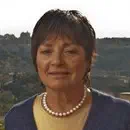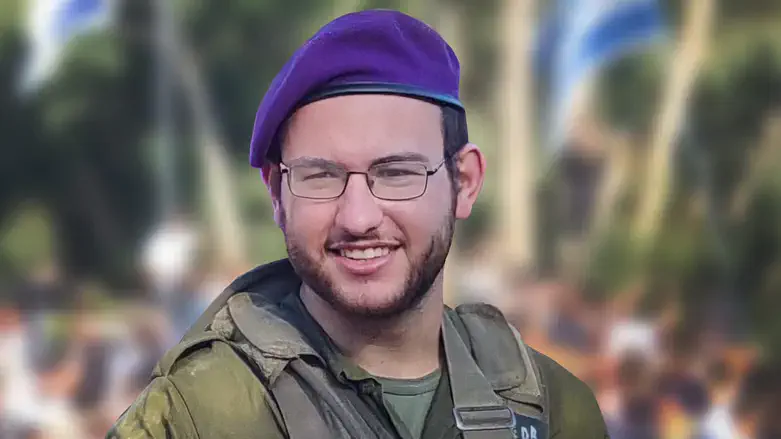
When brilliant young artist Eitan Rosenzweig created a monumental 3.6 meter-long drawing in black and white without preliminary sketches using only a scribe’s dip pen, he called it “Kuma, Mei-Afatzim veKankantum”, the Talmudic list of components that make up the ink used by Torah scribes (and I imagine him, a young man with a bright future before him, who loved ancient history - and all knowledge - rolling those esoteric words on his tongue and reveling in their sound), creating a magnificent visual Torah scroll which is also a microcosm of Jewish history. The work, which seems to me a graphic vision of the saying, “Israel and Torah are one,” is exhibited at the Bible Lands Museum located in Jerusalem.
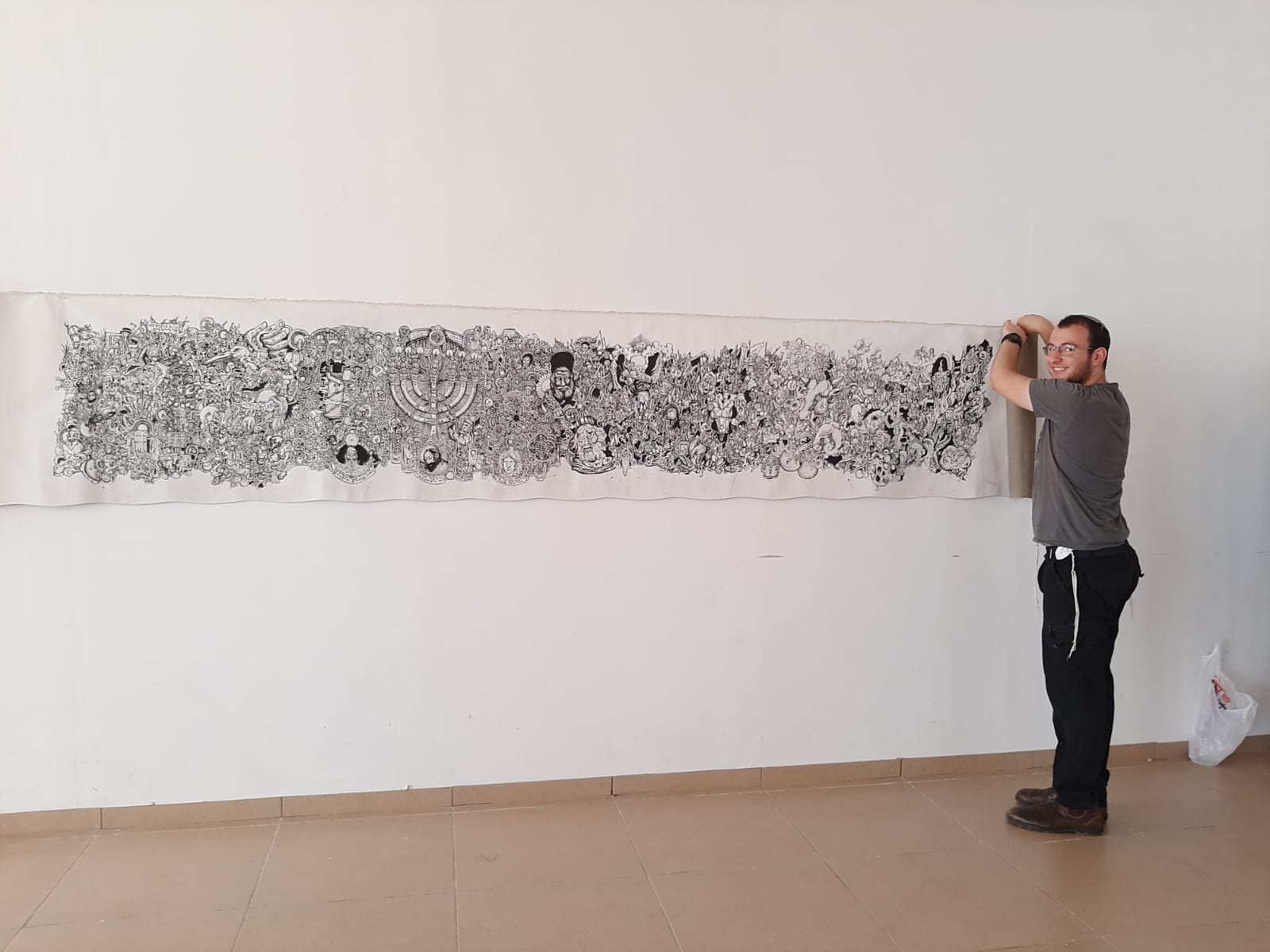
Eitan completed the riveting masterpiece before his eighteenth birthday, creating it for his high school matriculation as an art major, leaving Education Ministry examiners openmouthed and amazed. Years later, the head curator of the Israel Museum would marvel at the work upon viewing it, while on the day he presented the work, Eitan’s short exposition led to his receiving the highest grade in Israel that year, a special citation for excellence, various prizes and a full scholarship to study art.
Tragically, we will never know what Eitan’s more extensive explanations of his work would have been, but he did write that he leaves the freedom to interpret it to the viewer. Art, however, was only one aspect of his too-short life. Courageous, idealistic and highly intellectual, a poetry writer, concert and museum goer, avid reader and outstanding student who loved to learn, he was first and foremost an ardent lover of Torah who attended the Yerucham Hesder Yeshiva after graduating Ohr Torah’s Neve Shmuel Yeshiva high school and the regional religious elementary school in his home area of Gush Etzion, not even considering going straight to art school. His Rosh Yeshiva recalled that although he usually taught from memory, he would write things down when lecturing Eitan’s class so as to be more exact and better able to answer his questions – and when the Rabbi spoke at the shloshim, he came with notes, saying sadly that Eitan must be listening….
In Yerucham, Eitan enlisted with his classmates for IDF service, was demobilized just before Yom Kippur 2023, returned happily to yeshiva with a stack of new books after joining the whole family for a trip on Sukkot (a farewell gift, his parents say…), but he and his friends were called to combat almost immediately after the October 7th massacre.
----------------------------------------
I enter the Bible Lands Museum Jerusalem, walk down a short flight of stairs and look to the left where, thanks to the vision of the museum's Executive Director Dr. Risa Levitt, also professor of Hebrew Bible and Judaism at San Diego State University, a carefully designed alcove dedicated to Eitan’s art and writings draws the visitor in to follow the mesmerizing flow of Eitan’s work of genius. It is an experience not unlike seeing Picasso’s Guernica for the first time or the treasures in Leonardo da Vinci’s notebooks.
Eitan’s minutely detailed visual Torah scroll is best understood with concurrent explanations of each of its four sections, just as (lehavdil) the written Torah given to the Jewish people at Sinai is the subject of ongoing exegesis and analytic commentary. The excellent Hebrew-English booklet published by the Bible Lands Museum Jerusalem in honor of the exhibition explains many of the motifs, but the hour-long tours led by Chaya Goldberg, Eitan’s articulate maternal grandmother bring the scroll to life. Chaya admits that although there has been much progress, not all the symbolism is understood yet, and tells visitors that experts are still looking for more explanations in Eitan’s notebooks which, she laughs, are more like hieroglyphics than script. (One can register for a tour with Eitan’s grandmother at 054-4777943. Note: the tour is in Hebrew)
Despite the questions that remain about certain motifs in the complex work, parts of which are said to be visualizations of the unconscious, she succeeds in imparting an understanding of the pictorial narrative interspersed with poignant recollections of her grandson’s childhood and teen years in the warm, loving family in which he was raised in Alon Shvut, Gush Etzion, as was his mother, a bank manager. Eitan’s father Uzi, who grew up in Mevo Horon, owns a well-known music store in Jerusalem. (Note: the exhibition will be travelling to other venues come summer, and any organization, educational institute or community that wishes to exhibit it can write to: uziros@gmail.com)

“Everything interested Eitan,” his father says. He spent hours in the school library, researching topic after topic that caught his interest until he felt he knew as much as he could learn by himself, and friends recall that he was at a loss for somewhere to spend his free time when the library was being refurbished. Not much interested in sports, he nevertheless was always surrounded by friends because of his pleasant personality (not that he didn’t act up with his brothers sometimes, his parents attest…), the warm smile that personified him and his sincere interest in others. He loved to bake and brought the cakes and challah he made to share with those at his table in Yeshiva every Shabbat.
Before he joined the IDF, Eitan made an effort to get into good physical shape – and like everything he did, he succeeded and was accepted for combat duty. The proud smile captured in the photo taken at the end of “masa kumta”- the exhausting 50 km trek (5 of them while carrying stretchers) that entitles Givati soldiers to their purple beret- tells it all.
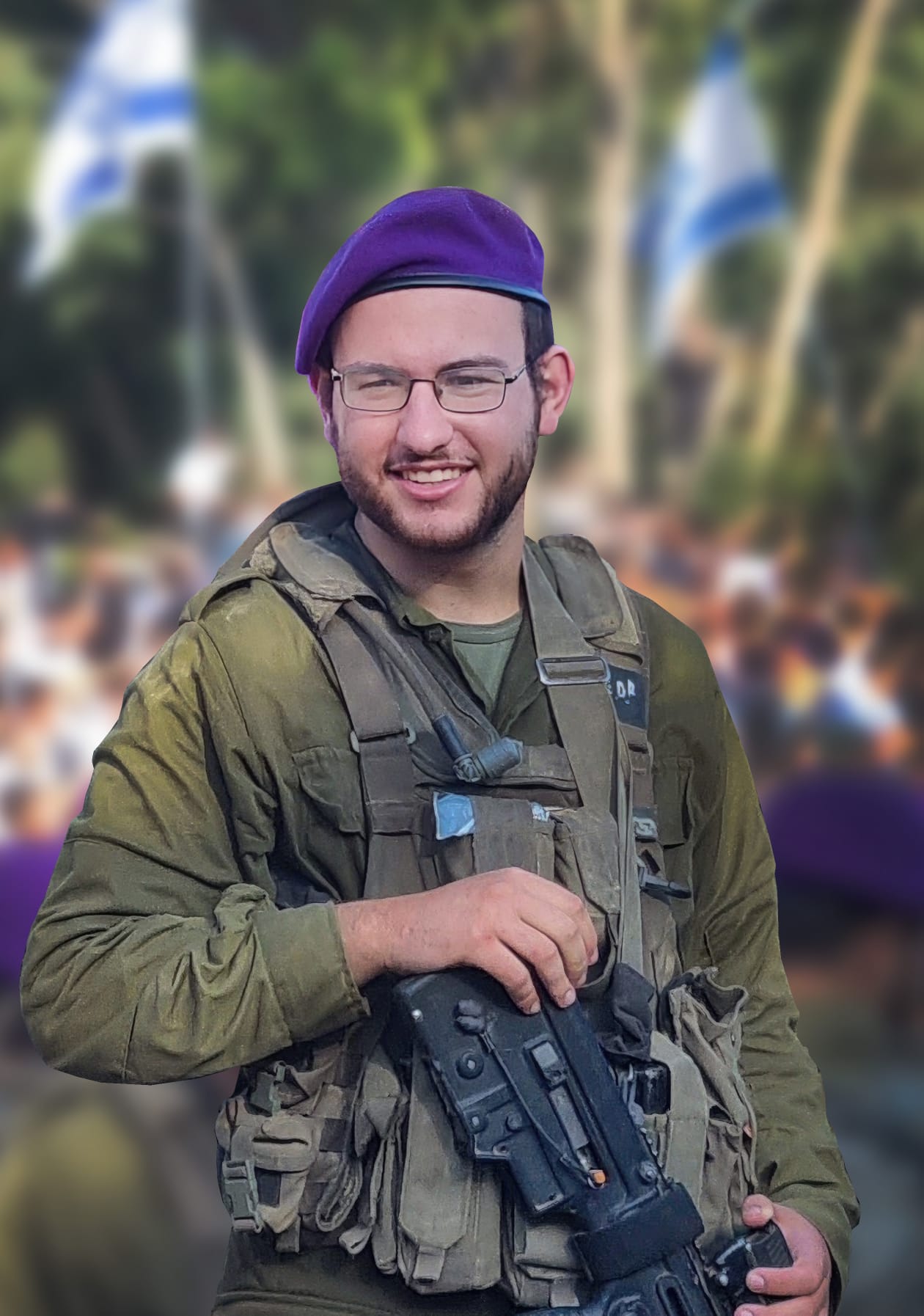
A story that many Israelis remember is how, at the age of 8, on a class trip to Tel Socho in the Elah Valley, Eitan found a fertility amulet dating from the Bronze Age, and although the trip’s leader thought it worthless, brought it to the Antiquities Authority as he was told is prescribed by law. He became famous overnight. It seems he had found a relic of the Bronze Age in an area that was heretofore thought to be inhabited only from the later Iron Age onward– this being a hotly disputed archaeological/Biblical debate between Jerusalem’s Hebrew U. and Tel Aviv U. with the latter claiming that the Kingdom of David and Solomon was a small fiefdom and the former insisting it was the powerful kingdom the Bible describes.
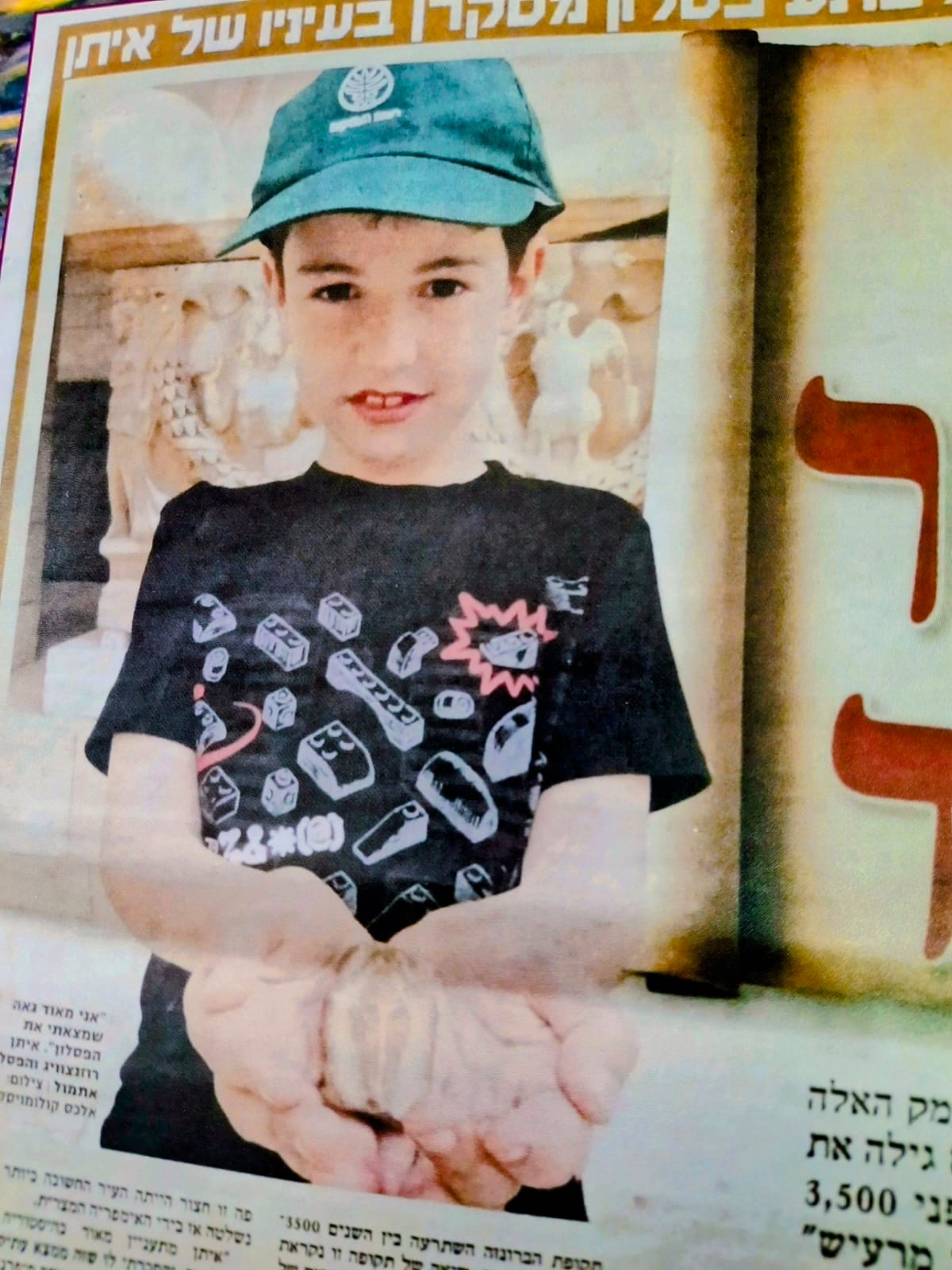
He then appeared on television, was invited to an official tour in the Rockefeller Museum – and being Eitan, decided to learn all about the periods involved. “He did just that,” says his father, “reading extensively about ancient Assyria, Egypt, Babylon and Rome, achieving such proficiency in writing the ancient paleo-Hebrew script that, with his wry sense of humor, he began writing the answers to examinations in ancient Hebrew script, saying innocently to teachers who complained: ‘Do you mean you cannot read ancient Hebrew?’”
----------------------------------------------
Staff Sergeant Eitan Rosenzweig (March 7, 2002-November 22, 2023) Hy”d, fell during fierce combat in Jabaliya in the Gaza Strip, fighting with the Givati Brigade’s Shaked company of which he was so proud to be a part. He could have elected to stay behind instead of joining the mission during which he was killed, could have accepted the offer to serve in the IDF making use of his artist’s abilities – he did design the t-shirts for his battalion and the company flag - but chose to be in the thick of the defense of his beloved country.
In Gaza, Eitan was one of 11 soldiers in a Namer troop carrier. In addition to the danger, it was crowded, with no mobile phones, no showers or running water for weeks, but Eitan managed to study his daily Gemara page (daf yomi) and found it an opportunity to use his considerable verbal and interpersonal skills to expound upon and discuss philosophical concepts with his fellow soldiers, secular and observant. He raised everyone’s morale by singing Sabbath songs, zmirot, on the Friday they entered Gaza for the first time.
Deputy Company Commander Yaron Eliezer Chitiz of Raanana, told Eitan’s parents the story: “Eitan was among the first forces to enter Gaza, on Friday night, October 27, and was engaged in combat almost from the first moment. They cleared 50 buildings of 6-7 floors each over two weeks and then reached the edge of Jabaliya on November 22, where they had to clear orchards filled with Grad missile launchers – the soldiers called it Grad Valley - but were met with terrorist fire in which Eitan was killed within minutes.” It was just one day before the first ceasefire.
Less than a month after Eitan fell, Yaron Chitiz was killed.
Yaron Hy”d had taught his family the zmirot he learned from Eitan and they were sung in his memory on Shabbat during the Chitiz shiva. Eitan’s best friend, Ephraim Yachman, got special leave to attend Eitan’s shloshim. He was buried a month later exactly where he had stood, near Eitan’s grave. The two friends’ younger brothers have since become close, helping one another through the stages of mourning for their beloved elder siblings.
Eitan Hy”d left grieving parents and grandparents whose eldest child and grandchild he was, four younger brothers, countless friends and a world bereft of the works he would certainly have continued to create despite declaring that after hesder, he intended to study philosophy. He probably would have done it all - the shelves in his room held an eclectic collection of books on Torah, philosophy, ancient history, poetry and literature and more.
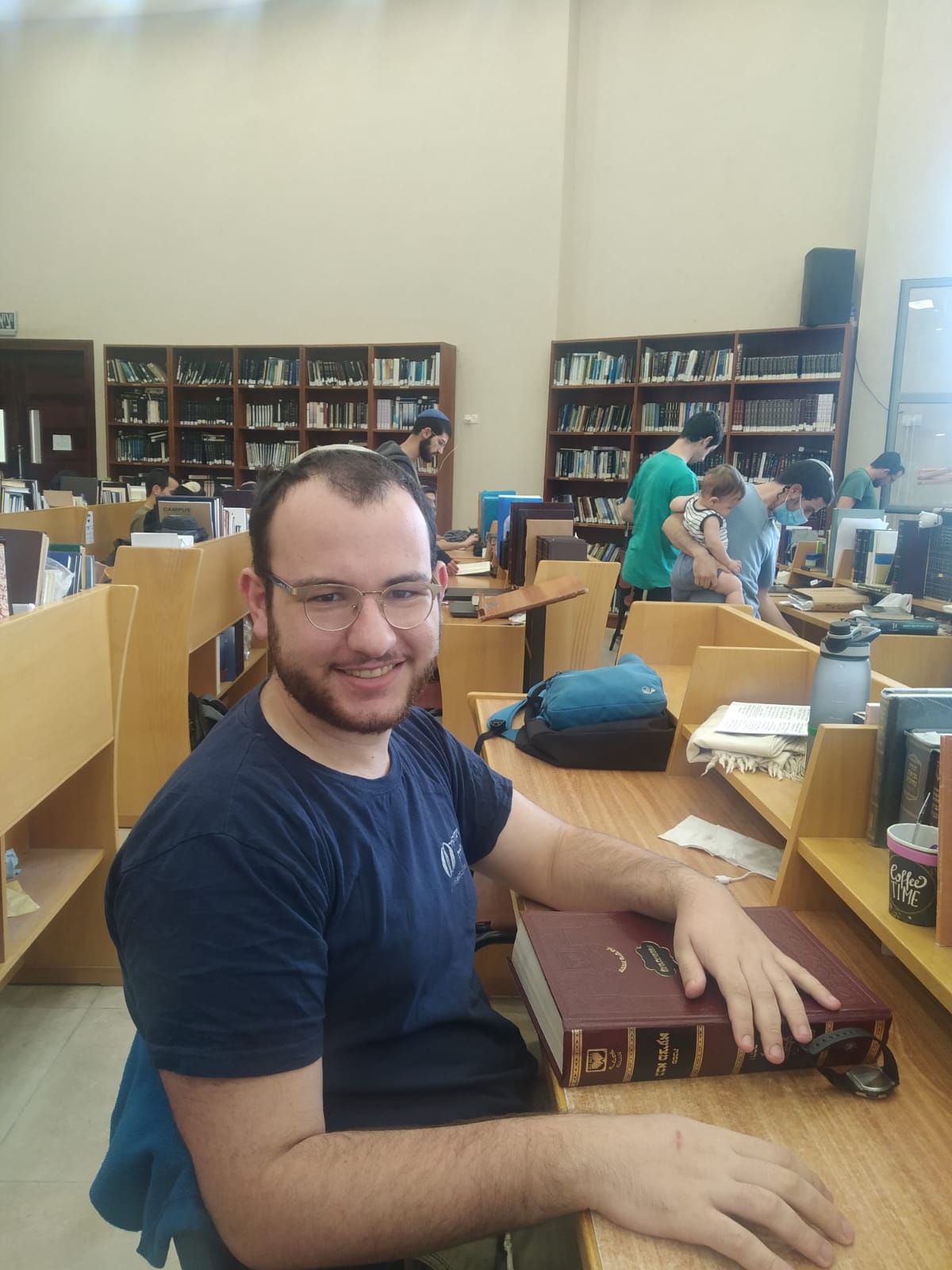
An officer high up in Military Intelligence research with whom he discussed philosophy predicted a meteoric rise to professor for Eitan, exacting a half-humorous promise from Eitan to be welcomed in his university office even after he becomes a professor. In contrast, in a book about pre-WWII poet and writer Hillel Zeitlin, whose works he liked to read, found in their home, the Rosenzweig family found an essay Eitan had written about the importance of studying Torah in a Beit Midrash rather than by oneself.
When Eitan’s family sat shiva for their beloved eldest son, Jerusalem’s Gerrer Hassidim, a large group of whom had attended the funeral, also sent representatives to the Rosenzweig home every day. On the last day of the shiva, Rebbe Shaul Alter himself, accompanied by his daughter and a group of Hassidim, paid a condolence call to the Rosenzweig family after giving a shiur (Torah lecture) at the Har Etzion yeshiva. It seems that Eitan was interested in Hassidism, so he simply went to the Rebbe and asked to learn more about it. The Rebbe did not respond at first, but Eitan continued to ask him questions, and grew to be a welcomed guest whenever he came to the Hassidic court.
The Hassidim issued a notice of mourning after Eitan was killed and recently dedicated a book to his memory. The Rebbe himself visited the museum to view Eitan’s scroll. Today, at special occasions such as Hannukah lighting or Lag Ba’Omer, Eitan’s father Uzi and brother Elad are given places of honor in the first row of those present, and Uzi was honored with pouring the oil that ignites the bonfire.
But Eitan also wrote poems, with a depth beyond his years. His family has framed them and some are part of the museum exhibit, along with drawings which seem to foreshadow his death. Especially riveting is Hoshana, painted when he was 19, partly inspired by a Goya painting, but in which a figure prays with the four species before an altar, with the biblical scapegoat in the background – and the now-chilling words: “For the sake of the Eitan (strong one) who was cast in the flame of fire, for the sake of the son who was bound on the wood and the fire…”
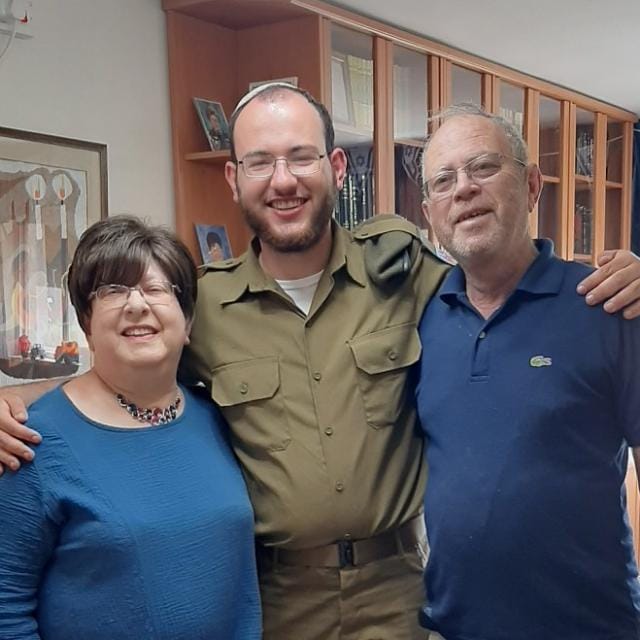
The work he gave his grandparents, with whom he was very close, seems a tranquil scene, until one looks at the chimney and realizes that it tells an esoteric story of its own.
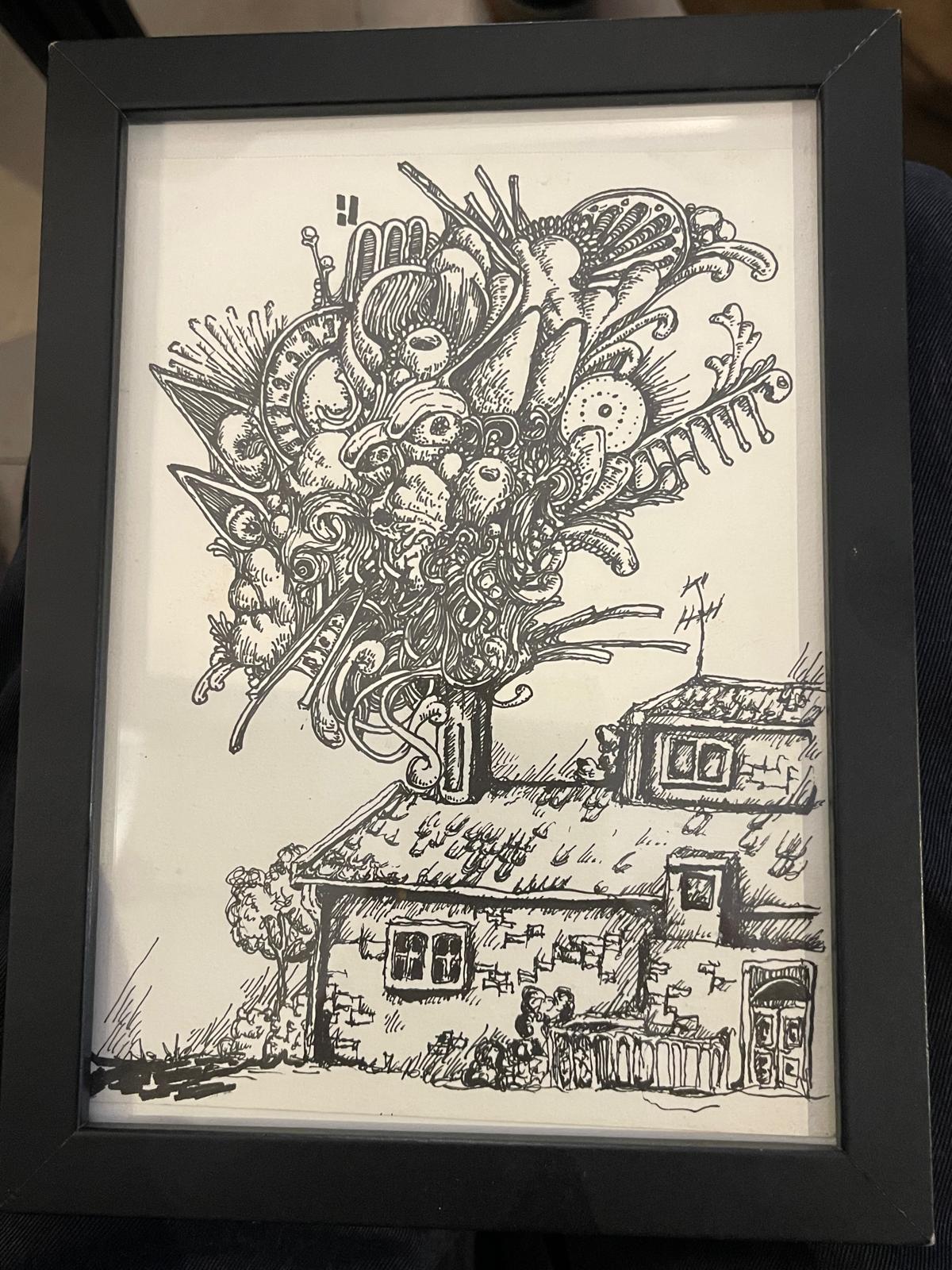
More and more facets of Eitan’s life are being unearthed, their sheer scope and number seem almost as if he knew that he had little time left, but the masterpiece at the Bible Lands Museum Jerusalem is the lasting memorial to him. “The exhibit gives us strength,” say Eitan’s parents and grandparents, “looking at it makes us feel as if his soul, his spirit, is still with us. We feel honored that he left us a gift that keeps on living and will be cherished by the Jewish People forever.”
And in another connection to eternity, a Sefer Torah will be dedicated in Eitan’s name at the beginning of April 2025 in the shul his family attends in Alon Shvut, Gush Etzion. May his soul be bound up in the scroll of life.
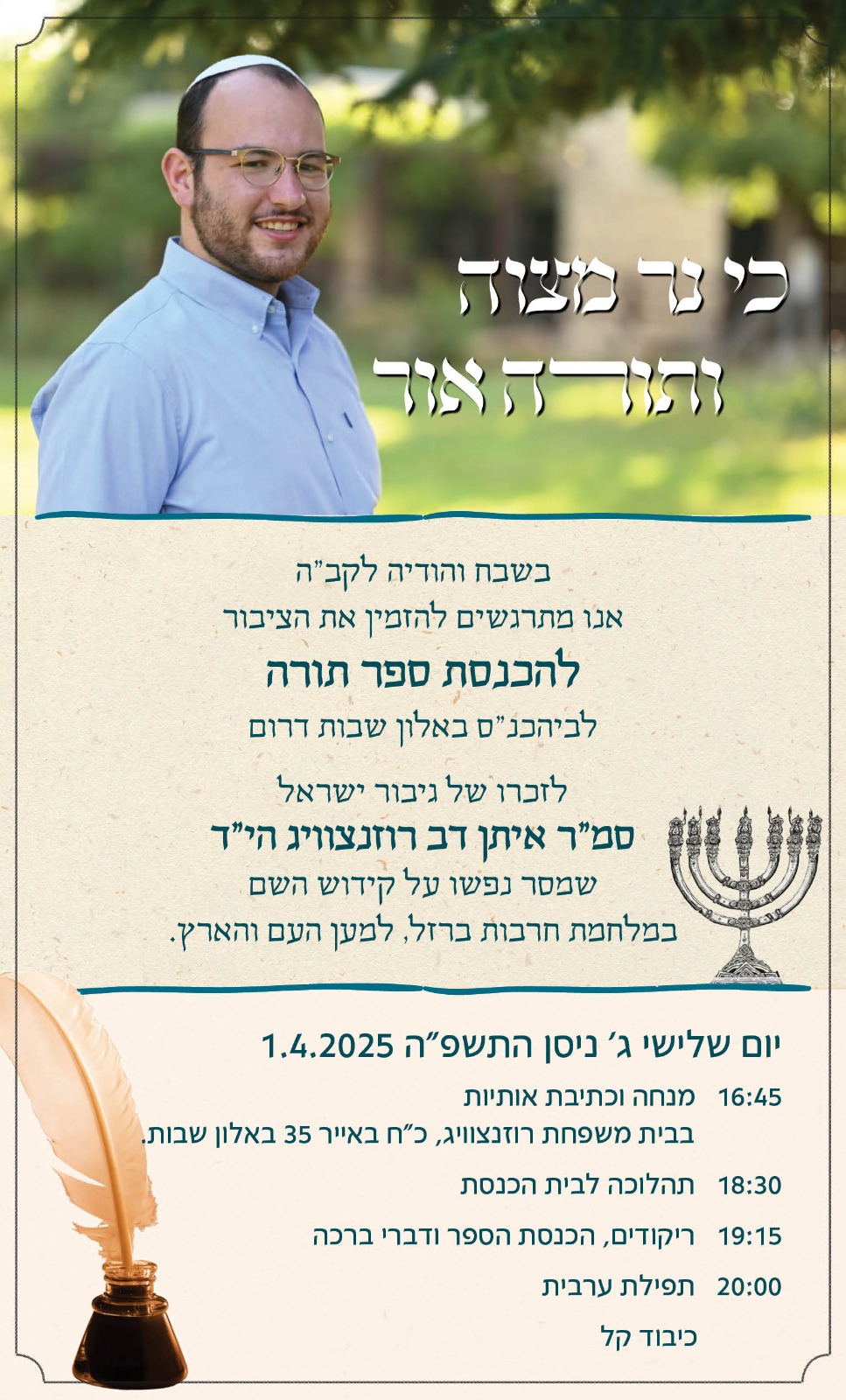
י
.
.
